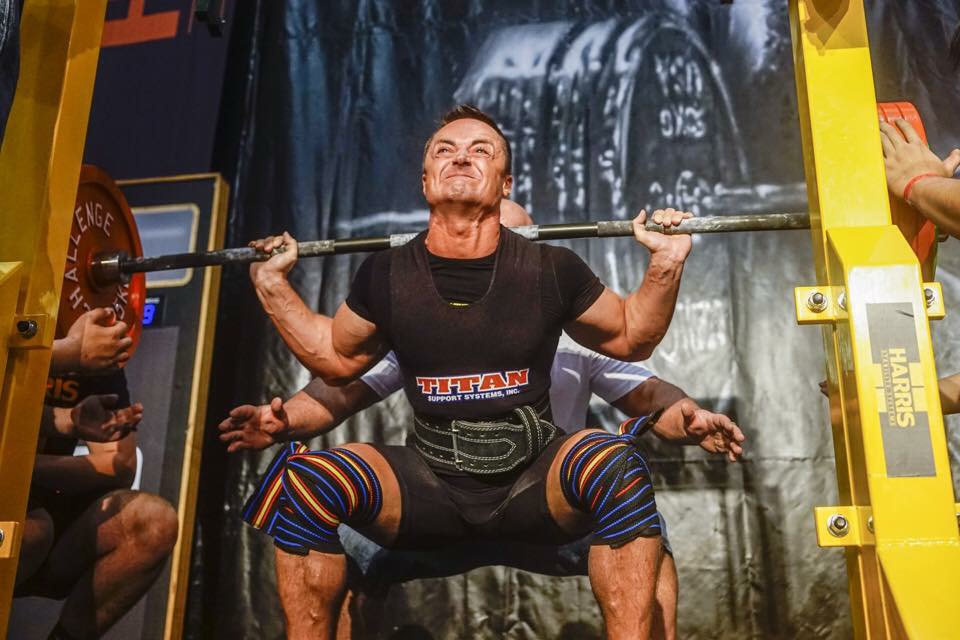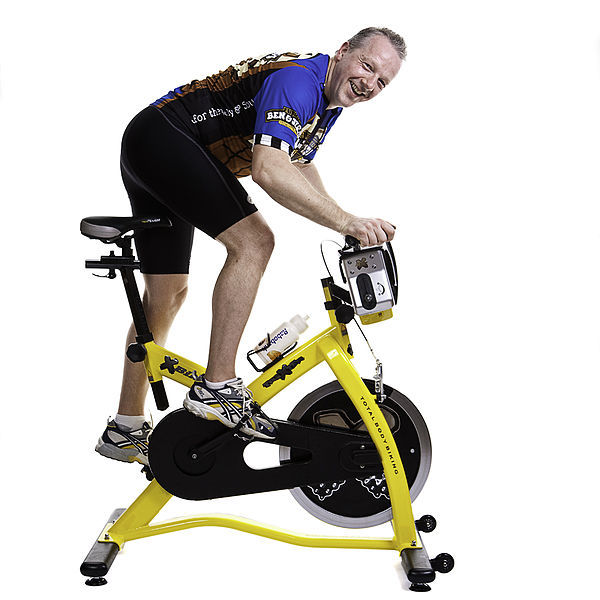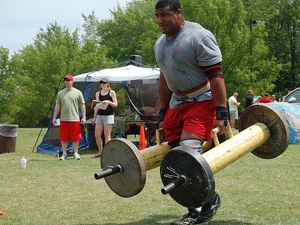
WHAT?
Should I De-load?

Everything was going well for Young Timmy in his training. It was all falling into place, with his strength seemingly continuing it’s never ending climb.
Work was going well, he was enjoying waking up every day.
5 weeks in to his training cycle, he steps up to the bar to deadlift and performs a rep.
Hang on. That didn’t feel right.
Let’s go again.
Nope. Even worse.
What was wrong with him?
Never mind, brush it off as a bad session, go home and recoup for the next day.
Then suddenly, he wakes up the following morning and doesn’t feel as motivated to go to work anymore. During his usual commute, everything that he would normally brush off, seems to agitate and irritate him.
What Has Happened?

In today’s world we often experience an imbalance of negative to positive stress that often results in all bodily systems being stretched a little too thin. This phenomenon is characterised as over-training.
Yes, it’s a term we’ve all heard before. This term is all too often used synonymously with the concept of de-load weeks.
De-load weeks are a common tool used within the training world with an aim to facilitate recovery and are a means to optimise long term progression. Some people swear by them and say are an essential part of the training process and others forbid to acknowledge their existence; coining an all too commonly used phrase of, “There’s no such thing as over-training, only under recovering”.
So, which is right?
It may surprise you to hear me say that the latter is more likely to be true. But not for the reasons you may think.
Before we delve into the mechanisms of fatigue, why a de-load can be so effective and how to appropriately implement it, we first need to understand what a de-load week is.
What is a De-Load?
A de-load week is usually a week in which individuals reduce their training intensity and/or volume to facilitate recovery not only in muscle tissue, but also to allow the systems that require a longer recovery time (e.g. connective tissue and the hormonal/endocrine system) a bit of a break.
What is Over-Training?
Over-training syndrome is defined as a complex physiological condition involving a variety of symptoms as shown in the table below.
![]()
There is one major limitation with some of these indicators however. In some instances, you need to be fairly aware of your state on a day to day basis to identify any changes from baseline.
Plus, if you are chronically stressed, then your baseline isn’t exactly a good starting point. You might not even be aware of what “fully recovered” feels like.
Saying that…it shouldn’t be difficult to note a sudden loss of appetite, or abnormal weight loss (8).
| PHYSIOLOGICAL | PSYCHOLOGICAL |
| Higher Resting Heart Rate | Sleep Disturbance |
| Fluctuations in Blood Pressure | Loss of Self-Confidence |
| Delayed Return to Normal Heart Rate | Drowsiness & Apathy |
| Elevated Basal Metabolic Rate | Irritability |
| Elevated Body Temperature | Excessive, prolonged weariness |
| Abnormal Weight Loss | Lack of appetite |
| Excessive Thirst | Depression/Confusion/Anxiety |
De-Load to Prevent Fatigue
Another factor to consider is that these symptoms are known as “lagging” indicators. They tend to appear after relatively prolonged exposure to stress, leading many people to advocate the use of a de-load week as a preventative measure, taking 1 every 4-5 weeks.
Most would recommend to de-load regularly to make sure you never over-train.
However, there’s one key problem with that logic.
There are far too many variables (as you will read soon) to isolate your stress response and overall recovery purely down to training alone.
Over-trained from Training Stress
Referring to my previous point, although many people are over-worked and under-recovering, it’s not usually down to their training.
For example, I hear many individuals stating that the reason they missed a lift, or feel a little off in training is because, “Their central nervous system (CNS) is fried”; failing to realise the sheer magnitude of stress your body would have to go through for this to happen.
It’s a lot harder to be “over-trained” purely from training than many people realise.
The body is phenomenal at responding to acute stress and fatigue. The traditional fight or flight response that many know about is highly adaptable and can respond rapidly, but due to homeostasis, can return to normal relatively quickly as well.
Chronic Stress
Chronic stress patterns on the other hand are much more damaging. I.E. If you have financial worries, problems in your relationship or are exposed to the harrowing effects of social media on mental health (to name a few), then this is the side of your life that is impeding your recovery. Training is only a very small part of it.
And although it is true, you can decrease your fatigue and de-load by resting or dropping a few reps and sets to great effect; there are other alternatives to mean your training doesn’t necessarily have to take as big of a hit.
But first…why does fatigue occur?

WHY?
Now this topic is open for a lengthy debate and is completely individual to the person involved. You may have simply worked so hard that your connective tissue needs a break. You may also feel like your muscle soreness just isn’t disappearing as quick as you used to, however most of these issues can be attributed to or explained by the following issue:
The balance between the sympathetic and parasympathetic nervous system.
Two Branches of the Same Tree
Sympathetic nervous system A.K.A “fight or flight” –
When stimulated it heightens the body’s activity and attention, resulting in, activation of adrenal glands, increased heart rate/blood pressure, increased conversion of glycogen to blood glucose and decreased digestion.![]()
Parasympathetic A.K.A “rest and digest” –
This controls all elements related to recovery. It is of paramount importance to convert your bodily functions back to normal. In other words, the opposite of the above occurs (5).
In the scientific community, there is an increasing interest into the effect that the nervous system has on the immune system. The nervous system and immune system are intricately linked, communicating via a variety of neurotransmitters, cytokines and endocrine hormones (12).
As a result, the nervous system can regulate the inflammatory response in peripheral tissues (e.g. skeletal muscle and connective tissue) as well as maintaining overall immune function, with a recent research review suggesting a link between these two branches of the nervous system to an autoimmune disease known as rheumatoid arthritis (9).
Sympathetic Hormones
Woah woah woah. You may be wondering why the hell are we delving into biochemistry. But, I’m not asking that don’t worry, just make a mental note of what compounds are involved in the sympathetic response. Trust me, you’ll have an “Aaaahhhhh *light bulb* moment” in about 5 minutes time if you do.
There are three major stress hormones that are released into te bloodstream and that are present during the fight or flight response –
Adrenaline, Cortisol and Norepinephrine (1, 4, 15) each of which act in their own independent way.

And they all have their place and are essential for health (yes, even cortisol that often gets a bad reputation), when sympathetic dominance occurs, the demand for these hormones elevates to a level in which other hormones (such as testosterone) begin to deplete. This is also known as the “cortisol steal” (6) and is a survival response to stress.
Your body will always prioritise initial survival (i.e. cortisol) over the ability to reproduce (i.e. sex hormones).
Just the way it is unfortunately.
Two Sides of the Same Coin
Now, these two elements of the autonomic nervous system are very much two sides of the same coin. One can’t exist without the other and to be healthy, they must remain in perfect balance.
Continuing with the analogy of a coin, we achieve optimal progression with both training and recovery, when the coin is spinning on end; neither side is more dominant than the other. However, when an external stimulus comes along and stops the coin and knocks it flat down, we become either sympathetic or parasympathetic dominant.

Although it is true, there are downsides to being parasympathetic dominant, that is much rarer in today’s world and is rarer still amongst those of us that train on a regular basis.
This is because training by it’s very nature, tends to activate the sympathetic response. Your heart rate elevates, your muscular tone rises in response to lifting weights and…stimulates the release of cortisol, adrenaline and norepinephrine. Sound familiar?
And despite the sheer benefits this brings, when unbalanced it can begin to have a negative effect on the body long term.
Lifestyle Factors
And unfortunately, it isn’t just the type of training that has a bearing on your overall recovery. It’s your lifestyle around it.
Have you ever stated that you “need a break” because you feel “stiff” or “tight”? Maybe you have that nagging back pain that feels like it’s “pulling” and you haven’t noticed, that this always gets worse during stressful times at work?
Well, research has shown that both physical AND mental stress can raise sympathetic activity and therefore, increasing their resting tension (17). It’s essentially the body remaining in the fight or flight response for a prolonged time preparing to fight the stress you have placed it under.
There is also new research showing excessive use of social media to increase resting salivary cortisol, or in other words, our stress levels (16).
I’m not saying for a second that you should stop using social media. I’m simply saying, that it can one of the many lifestyle factors that is influencing your ability to recover.
![]()
HOW?
So, how do we appropriately de-load and what can we change?
Drop the Intensity
This is probably the version that most people arfamiliar with, being catapulted into the training world by the fantastic book: 531 by former world record holding powerlifter and educator, Jim Wendler.
This is where you drop the training intensity you are currently working at by between 20-30% 1RM (e.g. if you were doing working sets at 85% 1RM, you should be working around 55-65% during a de-load). The key in this scenario however, is to continue to perform the lifts you are aiming to improve but do so with much lighter loads.
Due to the lighter loads, you are also recommended to increase the number of reps and sets. This not only allows for the continual practice of the motor skill, but also promotes an increase in blood-flow to the working tissues enhancing the flow of essential nutrients and decreasing inflammation.
Limitations
The main limitation of this method of de-load is the potential increases in training volume impacting your recovery. Although there are some minor discrepancies, the majority of the research agrees that training volume is the most influential factor when it comes to fatigue and over-training (10).
Therefore, increasing the training volume, even with a lighter load, may mitigate the benefits brought about by decreasing the intensity, meaning you don’t recover as much as you may have thought.
Drop the Volume – A.K.A Taper
Also know as a taper, a de-load week in which you decrease the training volume but maintain a relatively high degree of intensity is also another viable method of promoting recovery.
There is extensive research showing the benefits of maintaining a high training intensity prior to a competition, so much so that it is a widely used practice not only in strength sports (3), but other sports such as swimming (11) and rugby (2).
Limitations
As fun as it may be, lifting heavy isn’t always plausible. The heavier the weight you are lifting, the more strain is placed on the connective tissue (e.g. tendons and ligaments) as well as the endocrine and neurological system. Therefore, sometimes dropping the volume and continuing to lift heavy won’t promote fatigue either.
Parasympathetic Exercise
Low Intensity Aerobic Exercise
It is often said that running is “meditation in motion” and although I’m not advocating that everyone ditch the bar for the treadmill (I tend to say the exact opposite), when it comes to returning the body to a balanced state during a de-load, low to moderate intensity aerobic exercise may be the way forward. 
It has been shown to improve autonomic function (18) and allow individuals to continue to exercise, working towards a weight loss goal without incurring too much stress.
Yoga
Yes. Everyone has seen it and knows what it is. That’s because yoga has been around for centuries and for good reason.
Although the poses promote flexibility in certain positions and stability in others, it is actually the internalisation of the exercise and the parasympathetic stimulation it incurs on the body that is so beneficial to the promote recovery and deal with many of the symptoms of chronic stress (13).
Breathing & Meditation
I know. Very pseudo-sciency right? Well, unfortunately you’d be wrong. There is an ever-growing body of scientific literature showing the unbelievable benefits that simple meditation and breathing exercises can have on the autonomic nervous system, again, stimulating parasympathetic activation (7, 14).
The Bar vs. The Mat
You don’t even have to ask that question. And these forms of exercise (although I would advise it) doesn’t even have to become a staple aspect of your training on a regular basis.![]()
It can simply be an addition (as part of a warm-up, cool-down, morning routine etc.) during high stress periods, whether the stress comes from training or from every day life.
Rather than having to de-load every 4th week and wasting 12 weeks of the year where you could be training, simply introducing 1 of the 3 modes above can aid with the recovery you need and make a substantial difference to your recovery, allowing you to continue to work towards any goal you have in mind.
Summary
- The stress response is a natural survival mechanism – the body is great dealing with acute stress, but overtraining is a result of over-exposure to chronic stress.
- The stress hormones that are released in training, are also released in response to stressful situations in daily life.
- Today’s society means that going home and “resting” from training, isn’t really “resting” at all.
- Introducing exercises that stimulate parasympathetic activation are key to optimise recovery and prevent the need for a full de-load week, every month.
Reference List
- Baum, A., & Grunberg, N. (1997). Measurement of Stress Hormones. Measuring Stress: A Guide for Health and Social Scientists, 175
- de Lacey, J., Brughelli, M., McGuigan, M., Hansen, K., Samozino, P., & Morin, J. B. (2014). The effects of tapering on power-force-velocity profiling and jump performance in professional rugby league players. The Journal of Strength & Conditioning Research, 28(12), 3567-3570
- Gibala, M. J., MacDougall, J. D., & Sale, D. G. (1994). The effects of tapering on strength performance in trained athletes. International Journal of Sports Medicine, 15(08), 492-497
- Grunberg, N. E., & Singer, J. E. (1990). Biochemical measurement.
- Guyton AC, Hall JE. Textbook of Medical Physiology.10th edition. Philadelphia, PA: WB Saunders Company; 2000. p. 1064
- http://www.biodia.com/recources/resources_chronic_stress_source_of_illness.html #”
- Jerath, R., Edry, J. W., Barnes, V. A., & Jerath, V. (2006). Physiology of long pranayamic breathing: neural respiratory elements may provide a mechanism that explains how slow deep breathing shifts the autonomic nervous system. Medical hypotheses, 67(3), 566-571
- Johnson, M. B., & Thiese, S. M. (1992). A review of overtraining syndrome—recognizing the signs and symptoms. Journal of athletic training, 27(4), 352
- Koopman, F. A., Stoof, S. P., Straub, R. H., Van Maanen, M. A., Vervoordeldonk, M. J., & Tak, P. P. (2011). Restoring the balance of the autonomic nervous system as an innovative approach to the treatment of rheumatoid arthritis. Molecular Medicine, 17(9-10), 937
- Lehmann, M., Gastmann, U., Petersen, K. G., Bachl, N., Seidel, A., Khalaf, A. N., … & Keul, J. (1992). Training-overtraining: performance, and hormone levels, after a defined increase in training volume versus intensity in experienced middle-and long-distance runners. British journal of sports medicine, 26(4), 233-242
- Papoti, M., Martins, L. E., Cunha, S. A., Zagatto, A. M., & Gobatto, C. A. (2007). Effects of taper on swimming force and swimmer performance after an experimental ten-week training program. The Journal of Strength & Conditioning Research, 21(2), 538-542
- Steinman, L. (2004). Elaborate interactions between the immune and nervous systems. Nature immunology, 5(6), 575
- Streeter, C. C., Gerbarg, P. L., Saper, R. B., Ciraulo, D. A., & Brown, R. P. (2012). Effects of yoga on the autonomic nervous system, gamma-aminobutyric-acid, and allostasis in epilepsy, depression, and post-traumatic stress disorder. Medical hypotheses, 78(5), 571-579
- Tang, Y. Y., Ma, Y., Fan, Y., Feng, H., Wang, J., Feng, S., … & Zhang, Y. (2009). Central and autonomic nervous system interaction is altered by short-term meditation. Proceedings of the national Academy of Sciences, 106(22), 8865-8870
- Vaernes, R., Ursin, H., Darragh, A., & Lambe, R. (1982). Endocrine response patterns and psychological correlates. Journal of Psychosomatic Research, 26(2), 123-131
- Vanman, E. J., Baker, R., & Tobin, S. J. (2018). The burden of online friends: the effects of giving up Facebook on stress and well-being. The Journal of social psychology, 158(4), 496-507
- Wallin, B. G., Esler, M., Dorward, P., Eisenhofer, G., Ferrier, C., Westerman, R., & Jennings, G. (1992). Simultaneous measurements of cardiac noradrenaline spillover and sympathetic outflow to skeletal muscle in humans. The Journal of physiology, 453(1), 45-58
- Zoppini, G., Cacciatori, V., Gemma, M. L., Moghetti, P., Targher, G., Zamboni, C., … & Muggeo, M. (2007). Effect of moderate aerobic exercise on sympatho‐vagal balance in Type 2 diabetic patients. Diabetic medicine, 24(4), 370-376





